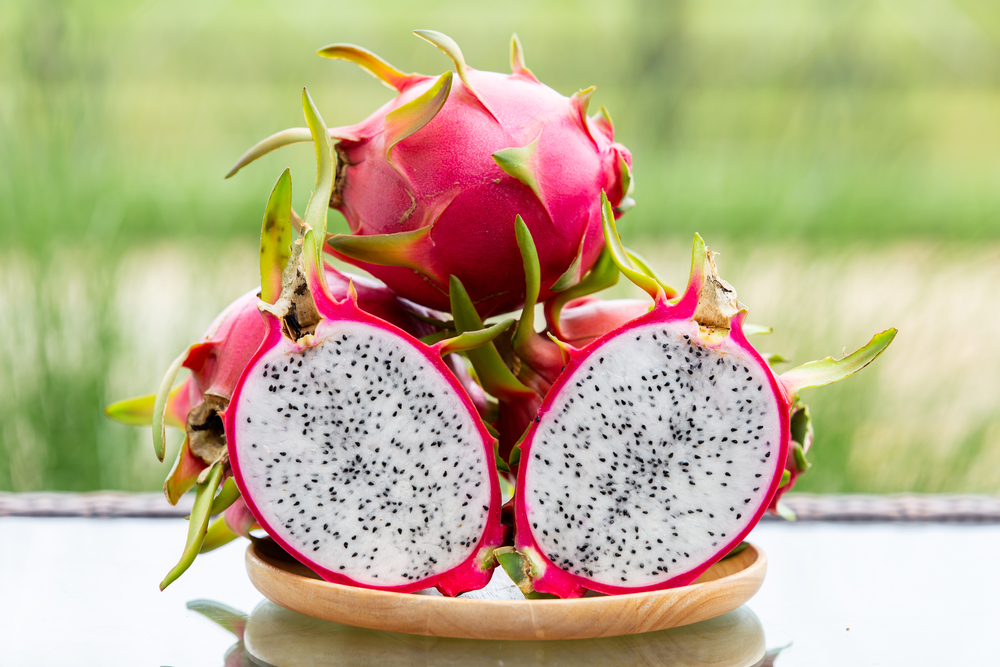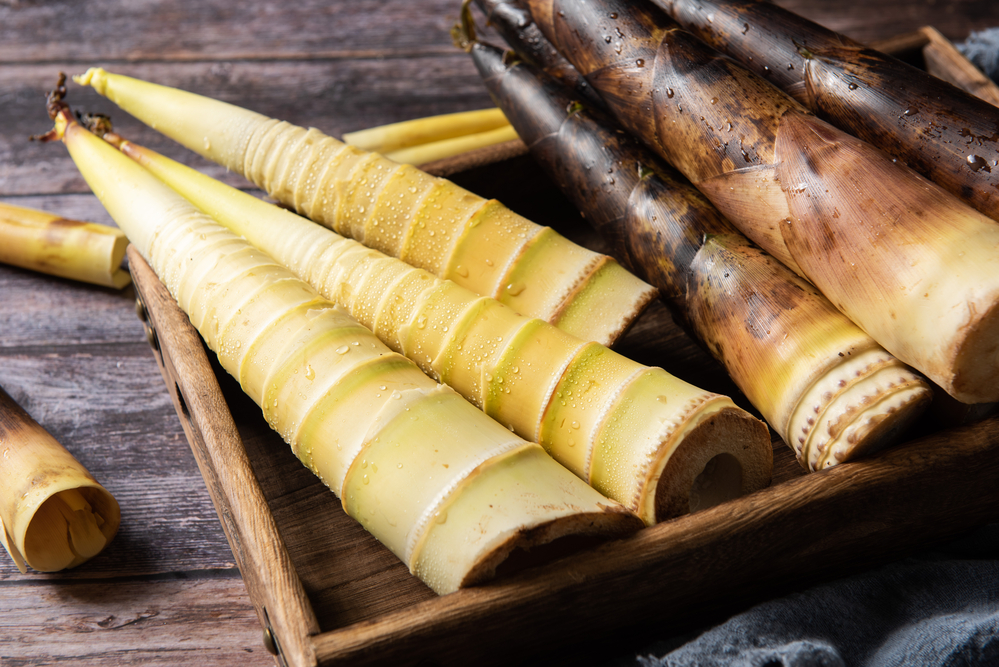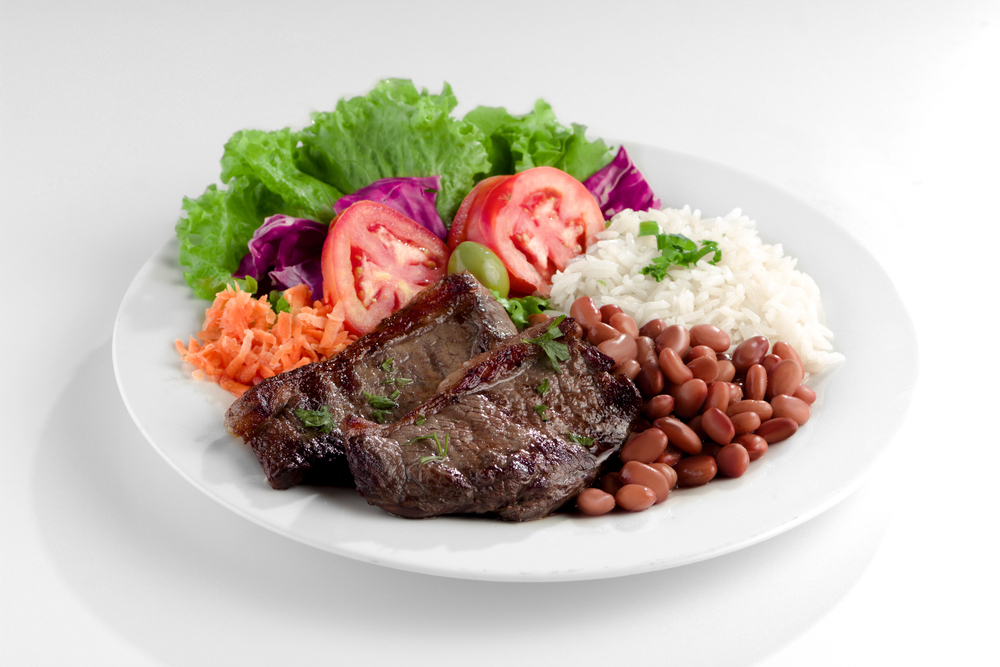Zongzi is a traditional Chinese food that is commonly eaten during the Dragon Boat Festival or Duanwu Festival. It is made by wrapping glutinous rice and various fillings in bamboo leaves, then steaming or boiling them.
Zongzi can be enjoyed fresh or reheated, and reheating zongzi can be a little tricky. In this article, I will share with you some tips and tricks on how to reheat zongzi perfectly every time.
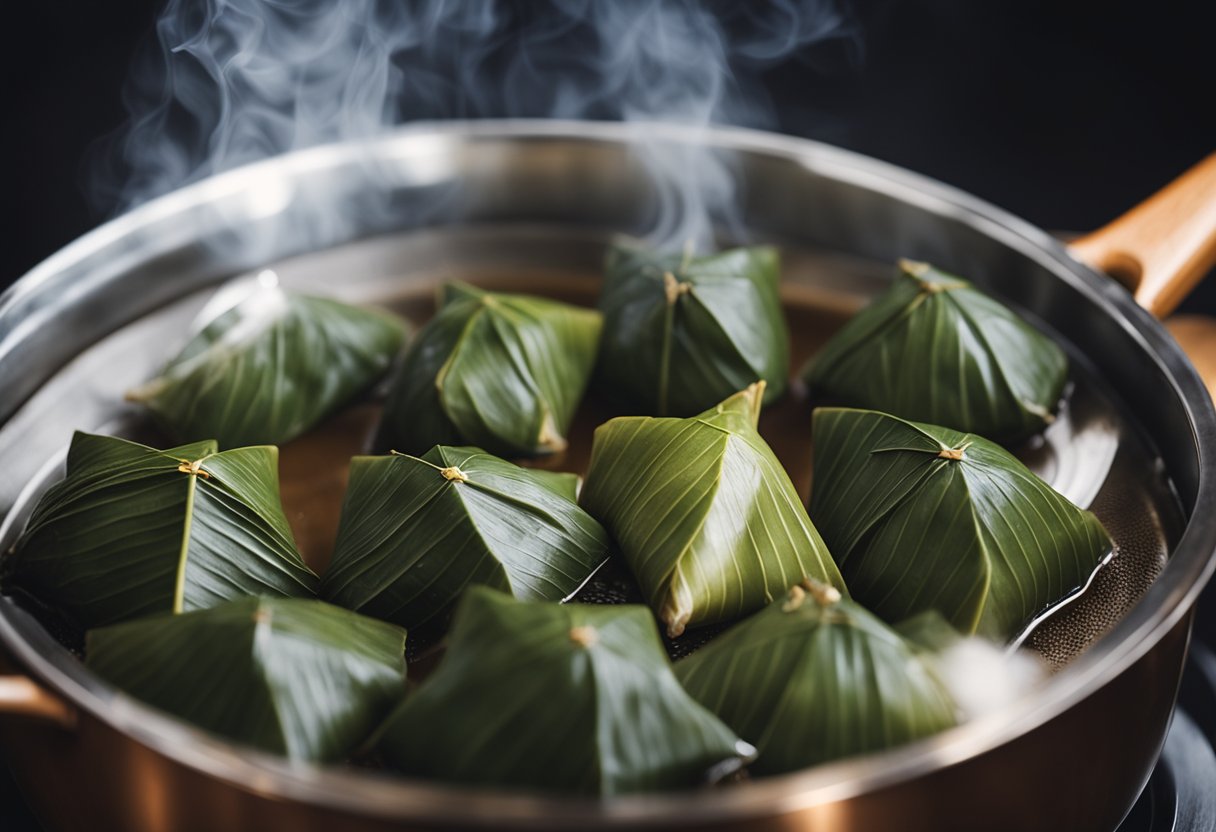
Understanding zongzi is crucial to reheating it properly. Zongzi can have various fillings, including pork, egg yolk, or red bean paste, and the size and shape of zongzi can also vary.
Therefore, the reheating method that works for one type of zongzi may not work for another. In this article, I will cover different types of zongzi and the best reheating methods for each.
Key Takeaways
- Understand the type of zongzi you have before reheating it.
- The best reheating method depends on the type of zongzi.
- Don’t overheat zongzi to avoid drying it out.
Understanding Zongzi
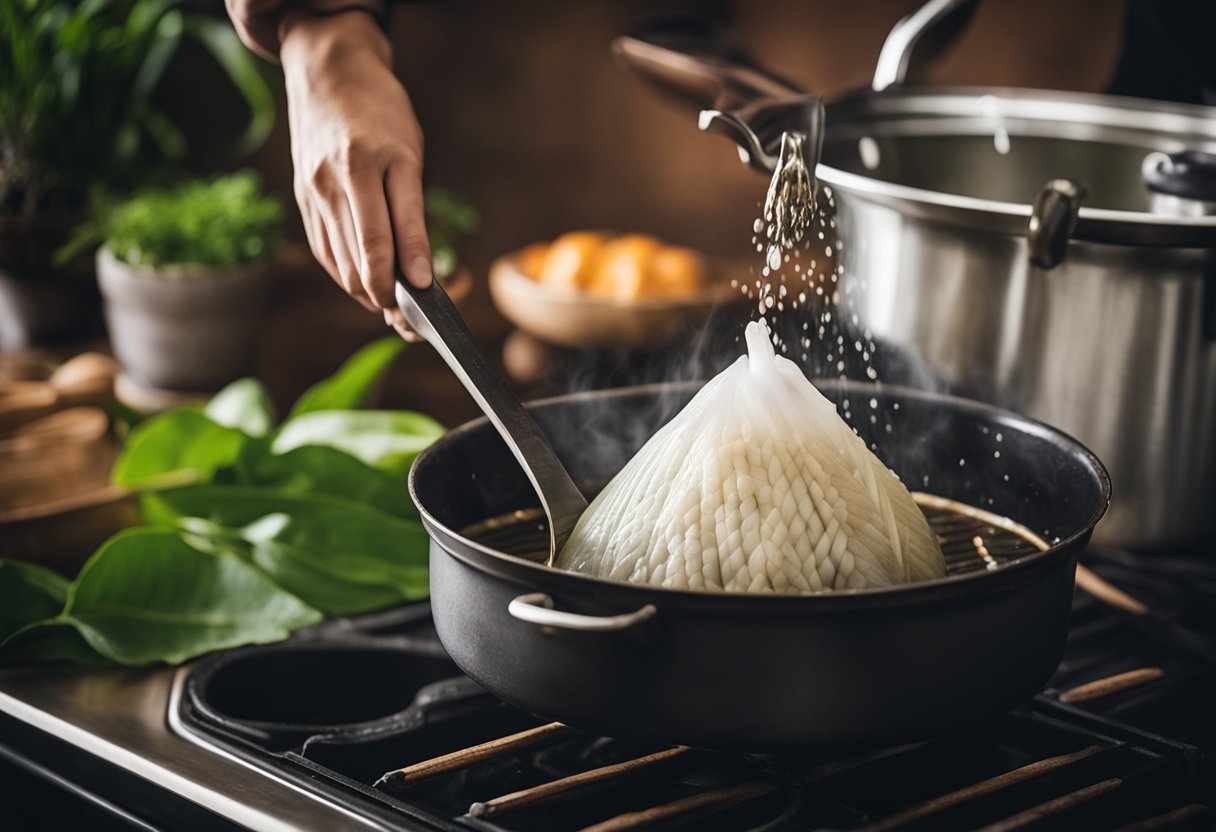
History and Significance
Zongzi is a traditional Chinese food that has been enjoyed for centuries. It is a glutinous rice dumpling that is typically wrapped in bamboo leaves and filled with various savory or sweet ingredients.
The tradition of eating zongzi dates back to the Warring States period (475-221 BC) and is often associated with the Dragon Boat Festival, which falls on the fifth day of the fifth lunar month.
During the Dragon Boat Festival, people often race dragon boats and eat zongzi to commemorate the death of Qu Yuan, a famous Chinese poet and minister who drowned himself in the Miluo River.
Legend has it that people threw zongzi into the river to prevent fish from eating Qu Yuan’s body.
Traditional Ingredients
The ingredients used to make zongzi can vary depending on regional and personal preferences. However, some of the most common ingredients include glutinous rice, pork belly, Chinese sausage, dried shrimp, shiitake mushrooms, mung beans, and peanuts.
The filling is often marinated with soy sauce, five spice powder, and other seasonings to enhance the flavor.
For sweet zongzi, the filling may include dates, lotus seeds, or sweet bean paste. Some zongzi even contain a whole salted duck egg yolk, which adds a rich and creamy texture to the filling.
Wrapping Techniques
Wrapping zongzi requires a bit of skill and practice. The first step is to soak the bamboo leaves in water to make them pliable.
Then, take two leaves and overlap them to form a cone shape. Add a scoop of glutinous rice to the cone, followed by the filling. Finally, add another scoop of glutinous rice to cover the filling.
Fold the leaves over the rice to form a pyramid shape, then tie the zongzi tightly with string. It’s important to wrap the zongzi tightly to prevent them from falling apart during cooking.
Overall, zongzi is a delicious and traditional Chinese food that can be enjoyed all year round. With a little practice, you can learn to make your own zongzi at home and experiment with different fillings and wrapping techniques.
Preparing Zongzi for Reheating
Zongzi is a traditional Chinese dish that is often enjoyed during festivals like Dragon Boat Festival. It is made of glutinous rice, wrapped in bamboo leaves, and filled with various ingredients like pork, mushrooms, and chestnuts.
If you have leftover zongzi or frozen zongzi, you may wonder how to reheat it properly. In this section, I will provide you with some tips on how to prepare zongzi for reheating.
Thawing Frozen Zongzi
If you have frozen zongzi, you need to thaw it before reheating. The best way to thaw frozen zongzi is to transfer it from the freezer to the refrigerator and let it thaw overnight.
Once it is thawed, you can reheat it using any of the methods I will describe in the next section.
Handling Refrigerated Zongzi
If you have refrigerated zongzi, you can reheat it directly without thawing. However, before reheating, you need to remove the kitchen twine that holds the zongzi together. Then, you can reheat it using any of the methods I will describe in the next section.
Reheating Zongzi
There are several ways to reheat zongzi, including steaming, microwaving, and boiling. Here are the steps to follow:
- Steaming: Fill a pot or steamer with water until it reaches just below the steaming rack. Place your desired number of zongzis on the rack, making sure there’s enough space between them. Cover the pot or steamer and bring the water to a gentle boil over medium heat. Steam the zongzis for around 15-20 minutes until they are heated thoroughly.
- Microwaving: Wrap each zongzi individually in a damp paper towel or kitchen cloth and heat for 1-2 minutes. Alternatively, you can use a microwave-safe container with a lid, adding a tablespoon of water before heating for 1-2 minutes.
- Boiling: Bring a pot of water to a boil and add the zongzi. Reduce the heat to medium-low and simmer for 10-15 minutes until they are heated thoroughly.
Before serving, you can remove the bamboo leaves or leave them on for presentation. If the zongzi is dry, you can rehydrate it by brushing it with a little water or oil.
In summary, preparing zongzi for reheating is a simple process that requires some basic knowledge of how to thaw frozen zongzi and handle refrigerated zongzi. Once you have prepared the zongzi, you can reheat it using any of the methods I have described.
Reheating Methods
When it comes to reheating zongzi, there are several methods you can choose from. Each method has its own advantages and disadvantages, so it’s important to choose the one that works best for you.
Steaming
Steaming is one of the most popular methods for reheating zongzi. It helps to preserve the moisture of the zongzi while ensuring even heating. To steam your zongzi, follow these simple steps:
- Fill a pot or steamer with water until it reaches just below the steaming rack.
- Place your desired number of zongzis on the rack, making sure there’s enough space between them.
- Cover the pot or steamer with a lid and turn the heat up to high.
- Steam the zongzi for 10-15 minutes, or until they are heated through.
Boiling
Boiling is another popular method for reheating zongzi. It’s quick, easy, and requires minimal preparation. To boil your zongzi, follow these simple steps:
- Fill a pot with enough water to cover the zongzi.
- Bring the water to a boil over high heat.
- Add the zongzi to the pot and reduce the heat to medium.
- Boil the zongzi for 5-10 minutes, or until they are heated through.
Microwaving
Microwaving is a convenient method for reheating zongzi, but it can make the zongzi soft and sometimes even liquid. To microwave your zongzi, follow these simple steps:
- Remove the zongzi from their wrapping and place them on a microwave-safe plate.
- Cover the zongzi with a damp paper towel.
- Microwave the zongzi on high for 1-2 minutes, or until they are heated through.
Using an Oven
Using an oven is another popular method for reheating zongzi. It provides even heating and helps to preserve the moisture of the zongzi. To use an oven to reheat your zongzi, follow these simple steps:
- Preheat your oven to 350°F.
- Remove the zongzi from their wrapping and place them on an oven-safe dish.
- Cover the dish with foil.
- Place the dish in the oven and bake for 10-15 minutes, or until the zongzi are heated through.
Overall, the best method for reheating zongzi depends on your personal preferences and the cooking time you have available.
Whether you choose to steam, boil, microwave, or use an oven, make sure to handle the zongzi carefully with oven mitts and ensure even heating to preserve their moisture.
Serving and Enjoying Reheated Zongzi
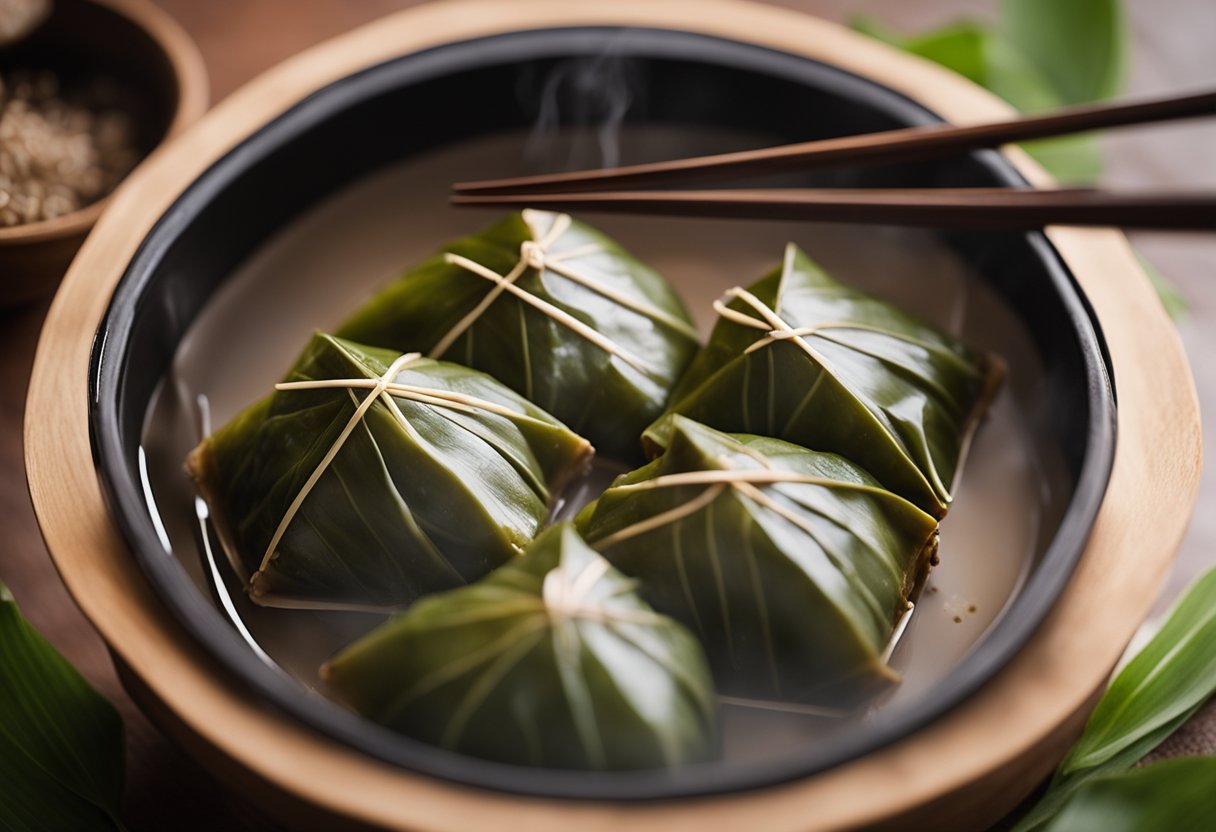
After reheating your zongzi using one of the methods outlined in the previous section, it’s time to serve and enjoy! Here are some tips to make sure your zongzi is presented well and paired with the right condiments.
Presentation Tips
When serving reheated zongzi, it’s important to keep presentation in mind. Zongzi are traditionally served in their bamboo leaves, so make sure to keep the leaves intact as much as possible.
You can also unwrap the zongzi and serve them on a plate for a more modern presentation.
If you’re serving zongzi as part of a larger meal, consider pairing them with other Cantonese dishes like stir-fried vegetables or steamed fish. This will help balance out the flavors and textures of the meal.
Suggested Condiments and Pairings
Zongzi have a unique flavor and mouthfeel that can be enhanced by the right condiments. Here are some suggestions for condiments and pairings that go well with reheated zongzi:
- Soy sauce: A classic condiment for zongzi, soy sauce adds a savory and slightly sweet flavor to the dish. Use light soy sauce for a milder flavor or dark soy sauce for a stronger, more complex flavor.
- Shaoxing wine: This Chinese rice wine is often used in Cantonese cooking and pairs well with zongzi. It adds a subtle sweetness and depth of flavor to the dish.
- Sweet rice: Zongzi are traditionally made with glutinous rice, which has a slightly sweet flavor. Pairing zongzi with another dish that features sweet rice, like a dessert or sweet soup, can help bring out this flavor.
- Chestnuts: Some zongzi recipes include chestnuts, which add a nutty and slightly sweet flavor to the dish. Pairing zongzi with other chestnut dishes, like a stir-fry or soup, can help bring out this flavor.
- Salted duck egg yolks: These are a common ingredient in zongzi and add a rich, salty flavor to the dish. Pairing zongzi with other dishes that feature salted duck egg yolks, like a salad or soup, can help bring out this flavor.
Overall, reheated zongzi are a delicious and satisfying dish that can be enjoyed on their own or as part of a larger meal. By following these presentation and pairing tips, you can make sure your zongzi is served and enjoyed to its fullest potential.
Pro Tips and Tricks
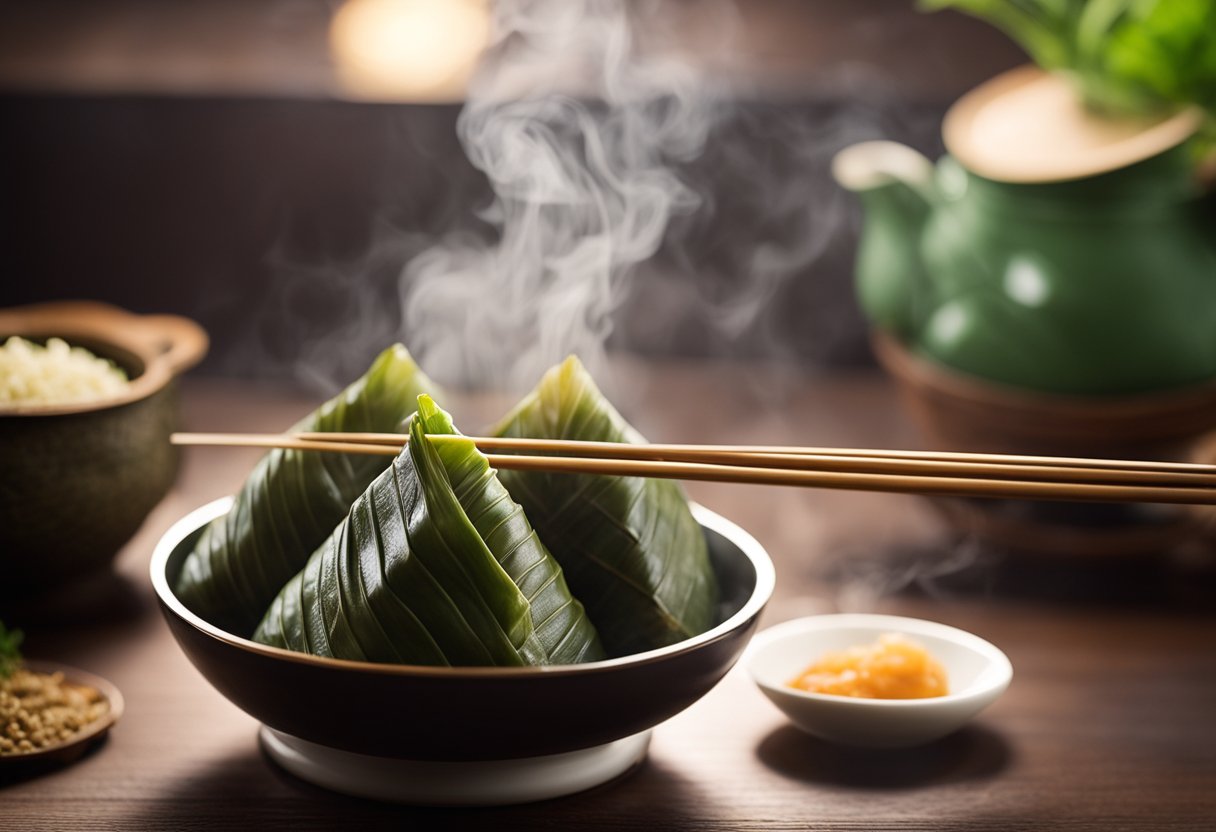
Ensuring Optimal Texture
As a zongzi enthusiast, I know that texture is everything when it comes to reheating homemade zongzi. To ensure that your zongzi maintains its texture, it is important to avoid overheating it.
Overheating can cause the rice to become mushy and the fillings to become dry and unappetizing. To avoid this, I recommend steaming your zongzi for around 15-20 minutes until they are heated thoroughly. 12
Another pro tip is to use short grain sweet rice. This type of rice is stickier and more glutinous than other types of rice, which makes it perfect for zongzi. It will help your zongzi maintain its shape and texture during the reheating process. 1
Maintaining Flavor and Moisture
When reheating zongzi, it is important to maintain its flavor and moisture. One way to do this is to use lye water when making your zongzi.
Lye water is an alkaline solution that is used to give zongzi its yellow color and unique flavor. It also helps to soften the rice and make it more tender. 3
If you are reheating savory zongzi, you can add a little bit of water to the pot or steamer to help maintain its moisture. For sweet zongzi, you can add a small amount of red bean paste to the filling to help keep it moist. 1
Another pro tip is to wrap your zongzi in bamboo leaves before reheating them. The leaves will help to retain moisture and prevent the zongzi from drying out. 4
In summary, to ensure optimal texture and maintain flavor and moisture when reheating zongzi, use short grain sweet rice, steam for around 15-20 minutes, use lye water, add water or red bean paste if necessary, and wrap in bamboo leaves.
With these pro tips and tricks, you can enjoy delicious, homemade zongzi any time of the year.
Frequently Asked Questions
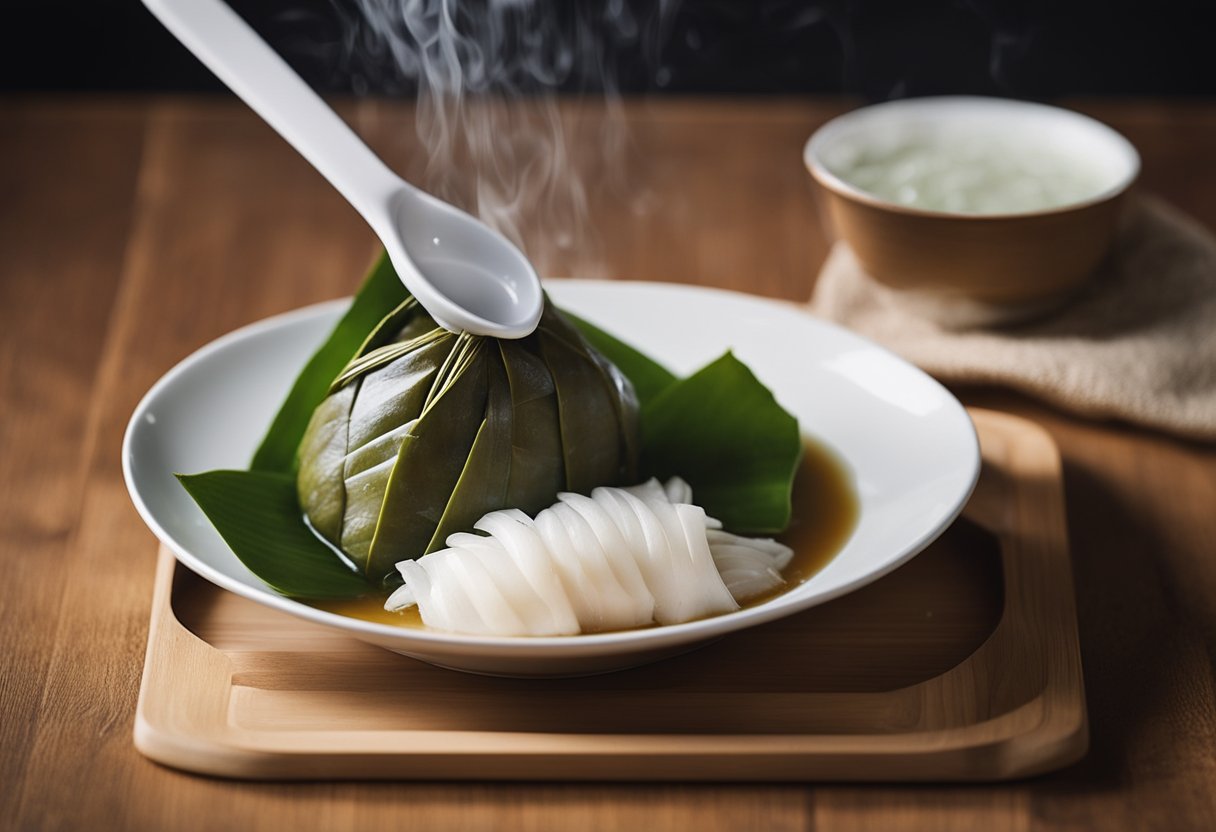
What is the best method to reheat zongzi?
The best method to reheat zongzi is by steaming it. Steaming helps to maintain the texture and flavor of the zongzi. Fill a pot or steamer with water until it reaches just below the steaming rack.
Place your desired number of zongzis on the rack, making sure there’s enough space between them. Cover the pot or steamer and bring the water to a gentle boil over medium heat. Steam the zongzis for around 15-20 minutes until they are heated thoroughly.
Can you reheat zongzi in the microwave, and if so, how?
Yes, you can reheat zongzi in the microwave, but it can be tricky to keep its original flavor. Carefully unwrap each zongzi leaf by leaf—a gentle unwrapping prevents tearing and keeps everything intact.
You may want to keep some extra bamboo leaves handy while reheating as they help retain moisture and prevent the zongzi from drying out. Once your zongzi is prepared, it’s time to reheat them in the microwave.
Place the zongzi on a microwave-safe plate and cover it with a damp paper towel. Microwave it on high for 30 seconds at a time until it is heated thoroughly.
Is it safe to reheat zongzi more than once?
It is generally safe to reheat zongzi once, but it is not recommended to reheat it more than once. Reheating zongzi multiple times can cause bacterial growth and lead to food poisoning.
What precautions should be taken when reheating zongzi to maintain its quality?
To maintain the quality of zongzi when reheating, it is important to keep it wrapped in bamboo leaves or plastic wrap. This helps to retain moisture and prevent the zongzi from drying out.
When steaming, make sure there is enough space between the zongzis to allow steam to circulate. When microwaving, cover the zongzi with a damp paper towel to prevent it from drying out.
How do you ensure the center of zongzi is hot enough when reheating?
To ensure that the center of zongzi is hot enough when reheating, use a food thermometer to check the temperature. The center of the zongzi should reach a temperature of at least 165°F (74°C) to ensure that it is safe to eat.
What are the differences in reheating methods for sweet versus savory zongzi?
There are no significant differences in reheating methods for sweet versus savory zongzi. The reheating methods remain the same for both types of zongzi.
However, it is important to note that the cooking time may vary depending on the size of the zongzi.
Footnotes


